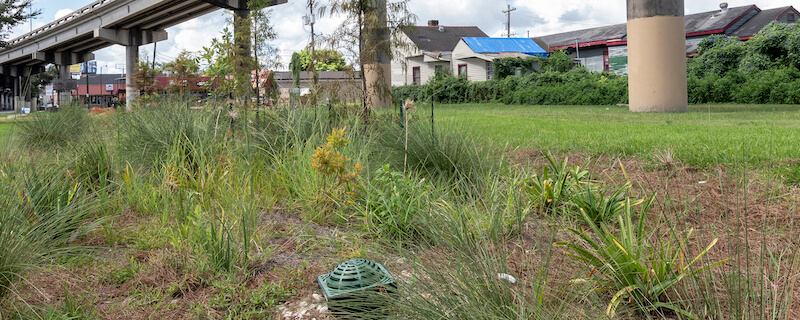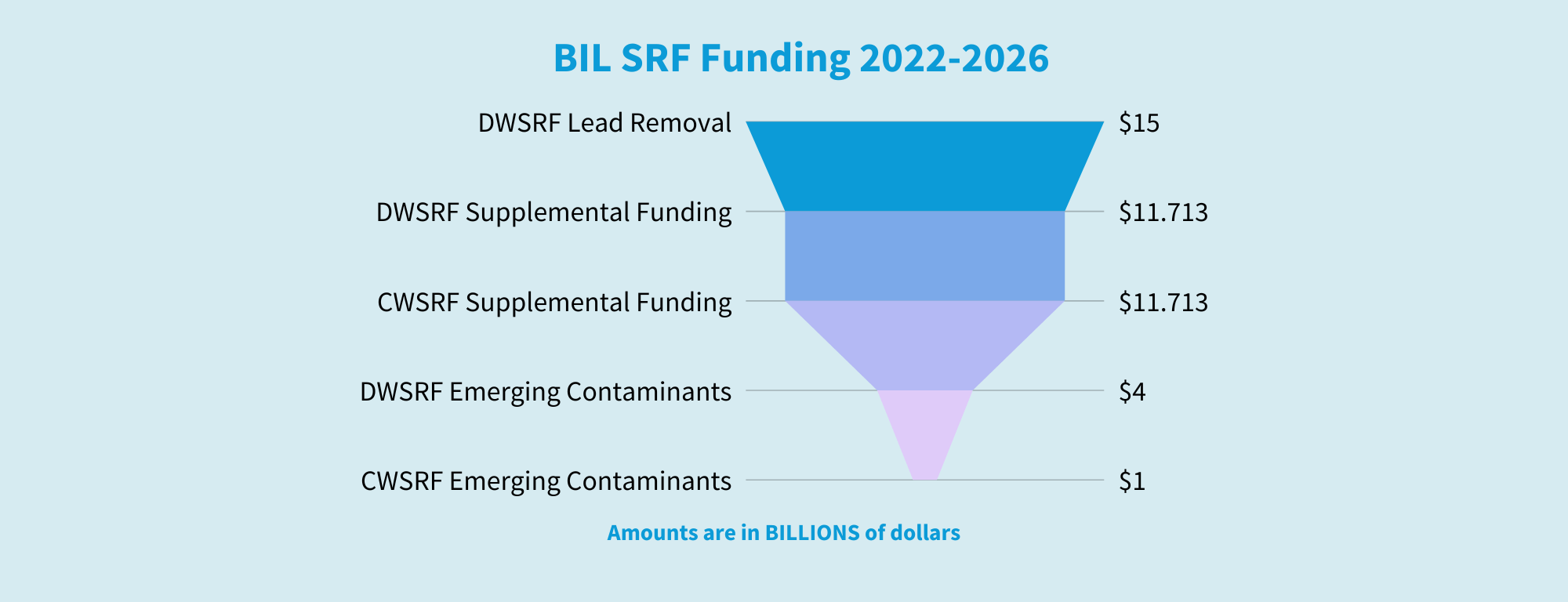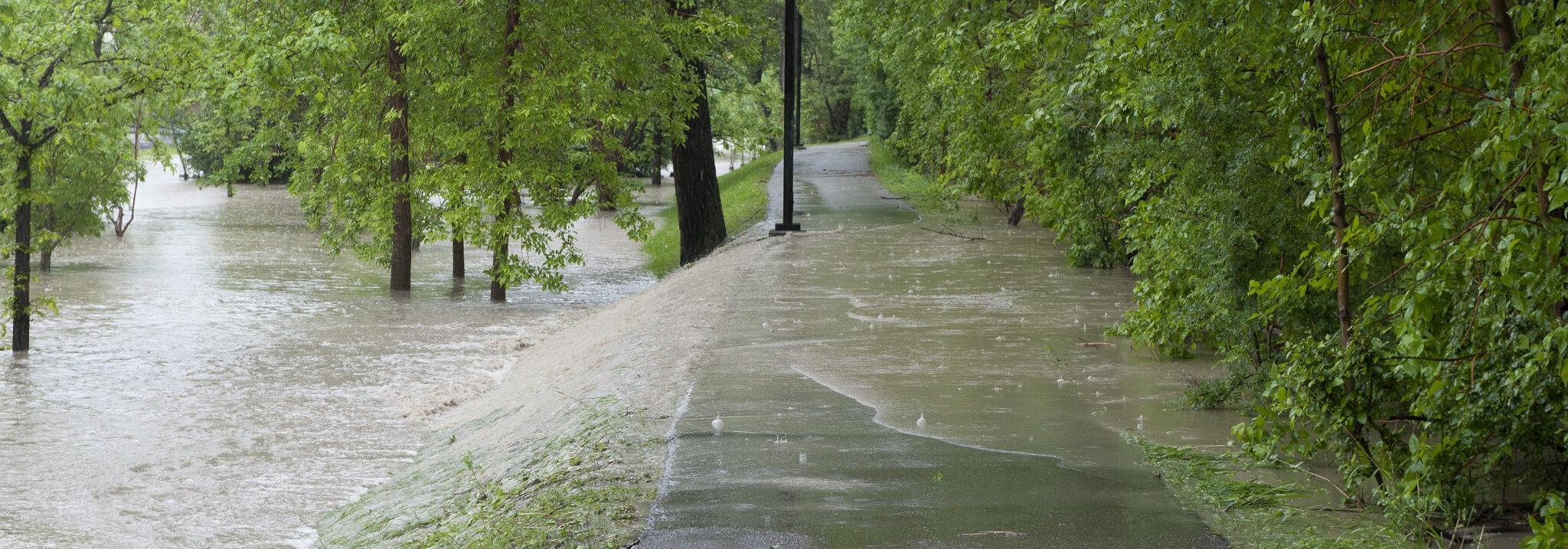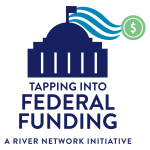Equipping the Network for the Federal Funding Long-Game
River Network has a long history of supporting local organizations in accessing the funding they need for their communities. The passage of the Bipartisan Infrastructure Law (BIL, Nov. 2021) and the Inflation Reduction Act (IRA, Aug. 2022) carry unprecedented prioritization of water via federal funding programs—and a historic opportunity for network members. To respond, River Network is equipping and connecting advocates to leverage federal funding across the focus areas of our work, from safe, affordable drinking water to climate-resilient communities and healthy, resilient rivers.
What kinds of funding are available? The BIL (also commonly referred to as the Infrastructure Investment and Jobs Act or IIJA) aims to increase equity in water infrastructure funding distribution nationwide, most notably through the nearly $50 billion directed toward drinking water and wastewater improvements via the State Revolving Funds (SRFs). Additionally, a total of $120 million is directed at the Department of the Interior via the IRA, with an explicit focus on advancing climate resilience, conservation, and equity. This includes prioritizing nature-based solutions and supporting locally led strategies to achieve conservation goals while addressing and adapting to a continually changing climate.
While we know that implementation of critical water projects and policies ultimately comes down to the local level, federal funding is an important resource, providing communities and cities with the dollars they need to carry out this important work. The need to ensure the historic federal funding made available via the BIL and IRA and improve access to these funding streams long-term by communities that are most in need is essential. River Network is committed to supporting our network to understand, influence, and access this current funding to ensure that it addresses the country’s most critical water needs, and to build the capacity of local organizations—who know their communities best—to engage in water infrastructure decision-making for the long term.
Here’s how we’re catalyzing change and strengthening the organizations we work with in each area of our work.

Safe, Affordable Drinking Water
The BIL is the biggest federal investment in our water infrastructure in decades, supporting foundational water infrastructure needs as well as addressing specific issues of concern, such as contamination from toxics like PFAS and lead service lines. Most importantly, this funding includes requirements for delivering a portion to disadvantaged communities as forgivable loans (ranging from 49-100 percent, dependent on the fund) and reduces the state match requirement to 10 percent for the first two years to increase accessibility for communities that would otherwise be overburdened with repayment. The EPA has also increased their focus on technical assistance in this space with support for environmental finance centers and a request form for communities in need.
 To meet this moment and support our network in navigating how they can influence the distribution of these funds toward communities in need, we have worked with partners including PolicyLink, EPIC, Alliance for the Great Lakes, the Clean Water for All Coalition, and others, to provide a comprehensive suite of resources. This includes the development of our SRF Advocacy Toolkit and the launch of a subsequent 8-week training, currently underway with a cohort of 20 advocates from across the country. Members of the cohort are working to address issues of flooding, water affordability, lead service line replacement, workforce development, and overall prioritization of environmental justice in their communities, utilizing the SRFs as a tool to achieve those goals. We are working with experts from across the field to support advocates in this training and walk through the key steps to leverage change in their communities.
To meet this moment and support our network in navigating how they can influence the distribution of these funds toward communities in need, we have worked with partners including PolicyLink, EPIC, Alliance for the Great Lakes, the Clean Water for All Coalition, and others, to provide a comprehensive suite of resources. This includes the development of our SRF Advocacy Toolkit and the launch of a subsequent 8-week training, currently underway with a cohort of 20 advocates from across the country. Members of the cohort are working to address issues of flooding, water affordability, lead service line replacement, workforce development, and overall prioritization of environmental justice in their communities, utilizing the SRFs as a tool to achieve those goals. We are working with experts from across the field to support advocates in this training and walk through the key steps to leverage change in their communities.
We also co-facilitate the SRF State Advocates Forum, a diverse, nationwide community of practice focused on increasing equity in implementation of SRF dollars. The Forum creates opportunities for advocates to learn, share lessons, and synergize across geographies and levels of government to pursue more equitable and climate-resilient infrastructure investments. If you are working on SRF implementation or are interested in learning more, download the SRF Advocacy Toolkit and join the SRF State Advocates Forum’s online community today.
Climate-Resilient Communities
In addition to the historic investments in water infrastructure, federal funds available through BIL and IRA represent significant increases in our nation’s investments in local and state climate resilience and adaptation. These increased investments are reflected across many federal programs, including FEMA’s Building Resilient Infrastructure and Communities (BRIC) and Flood Mitigation Assistance (FMA) grant programs, HUD’s Community Development Block Grants for Disaster Recovery (CDBG-DR) and NOAA’s National Coastal Resilience Fund and Community-Based Restoration Projects. Most of these programs are covered under the Justice40 requirement that 40 percent of their benefits accrue to disadvantaged communities.
Members of River Network have long been working to make their communities more resilient, advocating for local climate adaptation plans and action, promoting and installing green infrastructure projects to mitigate flooding, and engaging with members of their communities to understand how climate change is already impacting them and identifying solutions that have broad support. While much of this work has been funded by small public grants and private philanthropic dollars, the new federal investments represent an opportunity for our partners, in partnership with their local governments, to scale up their efforts.
 What’s new for the network are the many acronyms defined above and the ways communities access these dollars. That’s where River Network is plugging in. In the coming months, thanks to funding support from the Water Solutions Fund, our staff will be developing resources and offering trainings to help members of our network understand and navigate these funding opportunities. Our goal is to help water, justice, and river advocates across the network understand how each program’s funds are distributed, what projects are eligible and competitive for each program, and how they can work with local government representatives. This last piece is key: in many cases only local governments are eligible to apply for the funds, so local groups must collaborate to ensure that community-supported climate resilience projects are included in the local governments’ federal funding applications. Be on the lookout for these resources starting late this summer and into the fall.
What’s new for the network are the many acronyms defined above and the ways communities access these dollars. That’s where River Network is plugging in. In the coming months, thanks to funding support from the Water Solutions Fund, our staff will be developing resources and offering trainings to help members of our network understand and navigate these funding opportunities. Our goal is to help water, justice, and river advocates across the network understand how each program’s funds are distributed, what projects are eligible and competitive for each program, and how they can work with local government representatives. This last piece is key: in many cases only local governments are eligible to apply for the funds, so local groups must collaborate to ensure that community-supported climate resilience projects are included in the local governments’ federal funding applications. Be on the lookout for these resources starting late this summer and into the fall.
Healthy, Resilient Rivers
The loss of floodplains within river corridors, spurred by past and current spending and policy decisions, is contributing to water resources management challenges across the nation, including increased flooding and erosion, poor water quality, drought, and loss of biodiversity. The recent federal emphasis on nature-based solutions is one opportunity to integrate floodplain management programs that are aimed at reducing flood losses and protecting and restoring floodplains. In fact, many federal agencies’ funding priorities and state programs explicitly name these initiatives. We’re supporting our network to connect to federal funding resources by hosting peer calls to introduce local groups to funding opportunities and highlighting case studies for how to build local collaboratives to leverage federal funding. River Network is also developing a set of recommendations for how local governments can utilize state and federal funding sources, including development and infrastructure programs, to support protection and restoration of floodplain functions in a more flexible manner. For example, local governments can pool funding sources to support multi-purpose/multi-benefit projects that restore floodplain functions and provide recreational opportunities and access to nature for communities. We are also assisting state agencies with implementing programs that build capacity for local governments to plan and implement projects to protect and restore floodplains via federal funding such as WaterSMART grants, Clean Water State Revolving Funds, and Building Resilient Infrastructure and Communities (BRIC) as well as opportunities from the Bipartisan Infrastructure Law and the Inflation Reduction Act. This funding, combined with a recognition by riverside communities of the value floodplains provide, is creating a new era of river management, emphasizing the benefits of healthy rivers and floodplains, and their resilience to climate change and natural hazards.
Meeting the Moment
At the beginning of this year, River Network released our refreshed Strategic Plan. In it, we recognized our leadership role and shared accountability for the health of water across the US and the many people who call it home. We need abundant clean water for people and nature to thrive and know that the network’s impact working collectively over time is what will bring about this future.
This moment of significant federal funding is imperative for the network to capitalize on, building foundations for the future of abundant clean water for decades to come, no matter what changes may arise at the federal level. River Network is honored to support the network of water, justice, and river advocates at this time, helping them navigate this complicated landscape and center equitable and enduring solutions that start with community – created with, by, and for the people most impacted.
These government programs are not perfect, and are certainly complicated, but through collaboration, connection, and River Network’s expertise in unpacking their complexities, our collective impact can and will create a future with the three ambitious results we are working towards: safe and affordable drinking water, climate-resilient communities, and healthy, resilient rivers.






